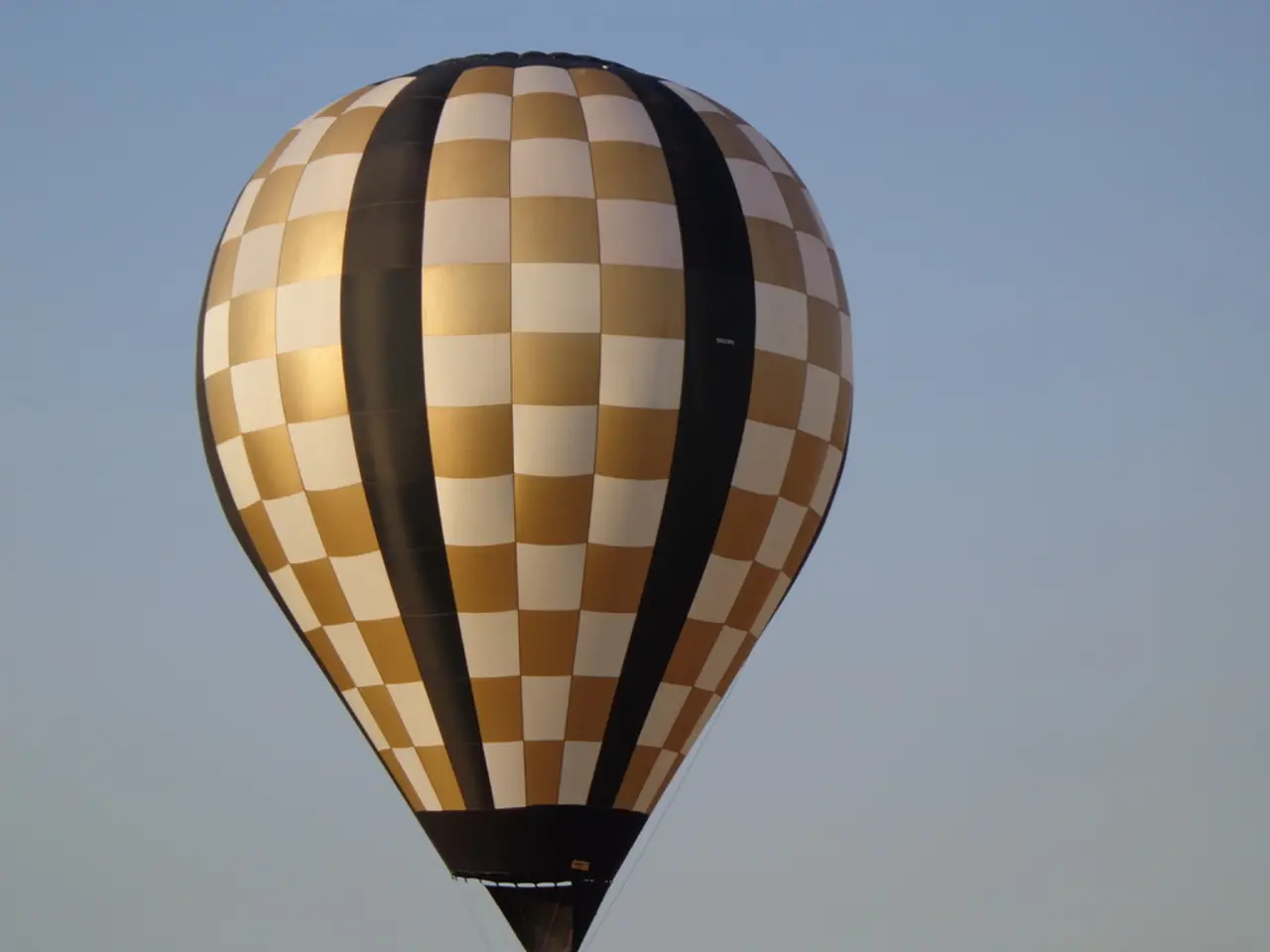Inflate a balloon using Alka-Seltzer tablets
In a fun and engaging science project, children can explore the concept of chemical reactions using everyday household items such as Alka-Seltzer, popping candy, balloons, and water. This article will delve into the differences and similarities between the reactions of Alka-Seltzer with baking soda and popping candy.
Before starting the experiment, it's essential to pre-inflate the balloons for faster results. Filling small bottles or jars with water, leaving a small gap at the top, is the first step. Then, add Alka-Seltzer to one bottle and popping candy to another.
The Alka-Seltzer and baking soda reaction is a well-known acid-base reaction. Alka-Seltzer contains sodium bicarbonate (baking soda) and citric acid. When these substances react, they produce carbon dioxide gas (CO2) and sodium citrate. This gas generation is vigorous and well-understood; the CO2 produced causes fizzing and can inflate a balloon effectively if trapped inside.
On the other hand, popping candy is made by trapping tiny bubbles of carbon dioxide gas inside candy crystals. When it interacts with a liquid, the gas is released physically by the candy crystals popping, rather than through a chemical reaction producing new gas molecules. Mixing popping candy with Alka-Seltzer may cause some physical release of pre-existing CO2 gas from the candy, but this does not generate the same volume of new CO2 as the acid-base reaction with baking soda.
To compare the reactions, here's a table outlining the differences:
| Reaction | Source of Gas | Amount of CO2 Produced | Balloon inflation effectiveness | |-----------------------------|-----------------------------|-------------------------------|------------------------------------| | Alka-Seltzer + baking soda | Chemical reaction producing new CO2 gas | Large volume of CO2 generated rapidly | High inflation due to substantial CO2 | | Alka-Seltzer + popping candy| Physical release of trapped CO2 in candy | Limited CO2 release, no new gas formed | Low to moderate inflation, less than baking soda |
In summary, the Alka-Seltzer and baking soda reaction produce significantly more carbon dioxide through chemical means, resulting in stronger and faster balloon inflation. The Alka-Seltzer and popping candy reaction only release already trapped gas in a physical process, producing less gas and therefore less balloon inflation.
It's also worth noting that warmer water in the jars may cause the balloon to inflate faster. Additionally, using similar principles, a film canister rocket can be made using Alka-Seltzer by building up gas pressure behind the canister lid, causing the top to blow off.
This experiment is an exciting way for children to learn about chemical reactions, understanding how substances change when another is added, and witnessing the production of carbon dioxide gas in real-time. By combining science with fun, this project encourages curiosity and a deeper understanding of chemical reactions.
- To increase the speed of the chemical reaction activity with Alka-Seltzer and other household items, consider using warmer water in the jars.
- As part of health-and-wellness and lifestyle, engaging in activities that help kids understand science, such as this experiment with Alka-Seltzer, can nurture curiosity and inspire future interests in education-and-self-development.
- In the realm of technology, this science project demonstrating chemical reactions could potentially be incorporated into virtual or augmented reality learning platforms for a more immersive and interactive educational experience.
- Beyond the scientific exploration of chemical reactions with Alka-Seltzer, it's beneficial for children to incorporate fitness-and-exercise into their daily routines, fostering overall health and well-being.
- By comparing the reaction of Alka-Seltzer with baking soda to popping candy, this project serves as an introduction to different types of reactions in science, encouraging children to explore further topics in the field of chemistry for a well-rounded education.




